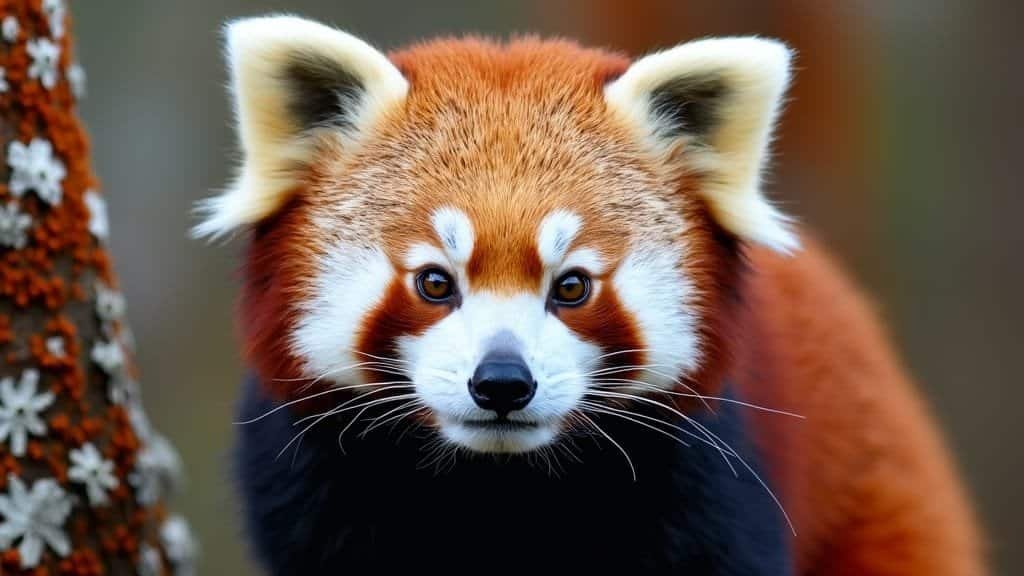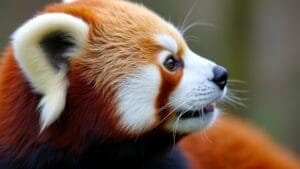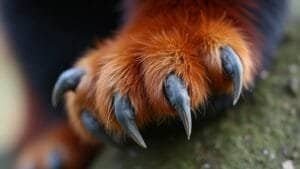Red pandas are easily recognizable due to their distinctive facial markings, which include white tear streaks, dark eye patches, and contrasting reddish-brown fur. These unique features serve various purposes that are essential for their survival in dense, high-altitude forests
The tear streaks may help reduce glare and improve vision, while the dark eye patches aid in camouflage by breaking up their facial outline, making them less visible to predators. Additionally, the contrast between their white cheeks and darker fur enhances their facial expressions, supporting social communication and individual recognition among red pandas
In this article, we will explore the characteristics of these facial markings, their roles in survival and communication, and the evolutionary reasons behind their development. By understanding the functions of these markings, we gain deeper insights into how red pandas thrive in their challenging natural habitats
Identifying the Unique Facial Markings of a Red Panda
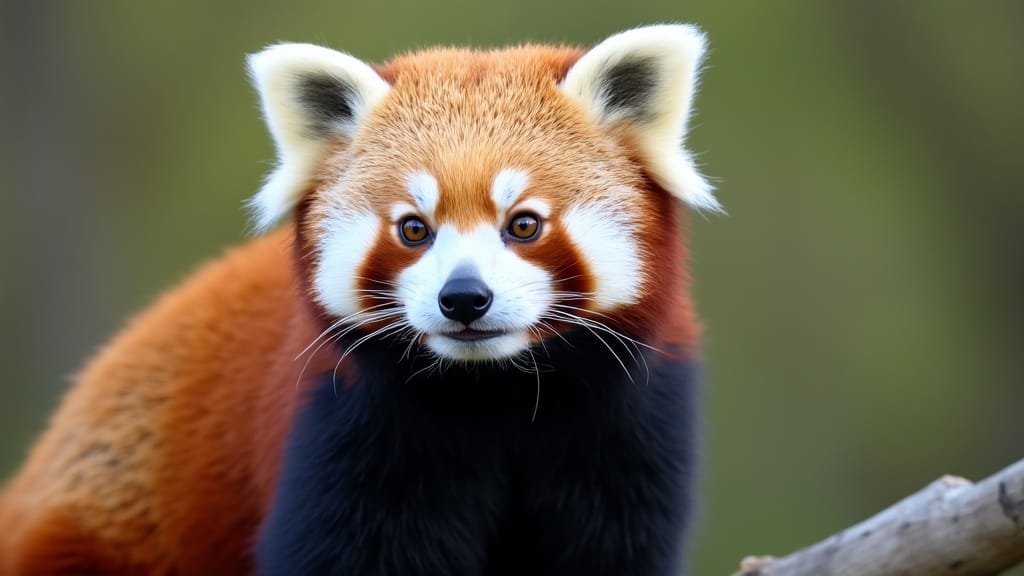
The red panda’s facial markings are among its most recognizable features, setting it apart from other mammals. These markings are not only visually striking but also serve important functional purposes. By examining the white tear streaks, dark eye patches, and contrasting fur patterns, we can better understand how these markings contribute to the red panda’s survival and behavior
The White Tear Markings and Their Function
One of the most distinctive features of a red panda’s face is the white tear markings that extend from the inner corners of its eyes down toward the sides of its muzzle. These markings create a striking contrast against the reddish-brown fur of the forehead and add to the expressive appearance of the red panda’s face
While the exact function of these markings is still being studied, they may play a role in reducing glare and enhancing vision. A study by Wei et al. (Journal of Mammalogy, 2014) suggests that tear streaks in mammals help improve visual contrast in environments with shifting light conditions, such as dense forests. This adaptation is similar to the dark streaks seen in cheetahs, which help them focus their vision while hunting
In the case of red pandas, these markings may assist in navigating their complex, arboreal habitat by improving their ability to detect movement and distinguish objects in dim light. Since red pandas are most active at dawn and dusk, the tear streaks may help optimize their low-light vision and provide a survival advantage when foraging or avoiding predators
The Role of Dark Eye Patches in Vision and Camouflage
Red pandas also have dark eye patches, which enhance their facial contrast and contribute to their cat-like appearance. These patches are located directly around the eyes, giving them a masked look similar to that of raccoons
One potential function of these eye patches is reducing glare and enhancing focus, particularly in bright or shifting light conditions. The dark fur may help absorb excess light, making it easier for red pandas to see clearly in their forested environment. This adaptation is useful for an animal that spends much of its time navigating tree branches and scanning for food
Additionally, the eye patches may play a role in camouflage by breaking up the outline of the red panda’s face. In the dappled light of a dense forest, the contrast between light and dark fur can help the animal blend in with tree bark and foliage, making it more difficult for predators such as snow leopards and martens to spot them. A study by Yonzon et al. (Biological Conservation, 1987) found that patterned facial markings can disrupt an animal’s outline, making it harder for predators to detect them in natural environments
How White Cheeks and Reddish Forehead Fur Contribute to Expression
Another defining characteristic of red pandas is the contrast between their white cheeks and the reddish fur on their forehead and ears. This pattern gives their face a high level of visual contrast, making their expressions more pronounced
Facial contrast plays a role in communication and recognition, allowing red pandas to display expressions of alertness, curiosity, or aggression. This is particularly useful during social interactions, such as during the mating season or territorial disputes. The Smithsonian National Zoo notes that high-contrast facial features make individual red pandas more recognizable to one another, aiding in social communication
Additionally, the white fur on their cheeks and snout may serve as a visual signal to other red pandas, helping them identify members of their species from a distance. Since red pandas are largely solitary, quick recognition through facial markings may help them assess whether another panda is a potential mate, rival, or offspring
For further insights into the unique facial patterns of red pandas, visit the Britannica red panda profile
The Purpose of Facial Markings in Survival and Communication
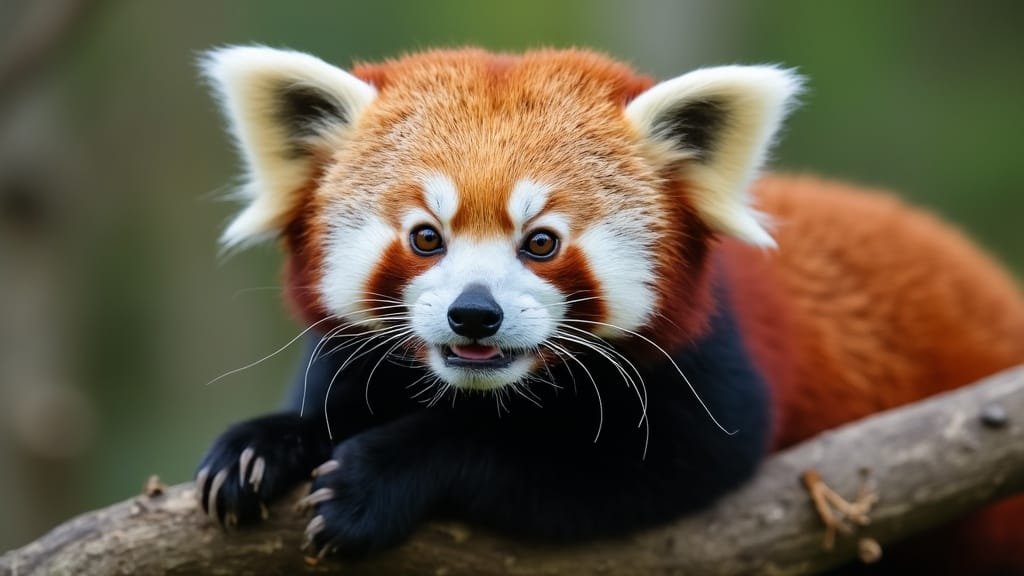
The facial markings of the red panda are not just for appearance; they serve essential functions that aid in survival and interaction with other red pandas. These markings help with camouflage in their dense forest habitat, play a role in social recognition, and may even influence mating and territorial behavior. Understanding these functions gives insight into how red pandas thrive in the wild
How Facial Markings Help Red Pandas Camouflage in Forests
The red panda’s fur patterns allow it to blend into its surroundings, making it less visible to predators such as snow leopards and martens. Their reddish-brown fur closely matches the colors of tree bark and moss-covered branches, while their dark eye patches and white markings help break up their facial outline in dappled sunlight
This natural camouflage is particularly important because red pandas are relatively small and do not have many physical defenses against predators. By relying on their markings to stay hidden in the trees, they increase their chances of avoiding detection. A study by Yonzon et al. (Biological Conservation, 1987) observed that red pandas often position themselves in the forks of tree branches, where their fur patterns make them difficult to spot from below
In winter, when snow covers much of their habitat, red pandas still benefit from their markings. The contrast between their lighter facial fur and darker body fur may help them remain less visible in snowy environments, much like how Arctic animals develop coat patterns that assist in concealment
Social Recognition and Communication Through Facial Markings
Although red pandas are solitary for most of the year, they do interact with others during mating season and when marking territories. Their facial markings play a role in helping them identify individuals, which is especially important in a species that does not rely heavily on vocal communication
The contrast between their dark eye patches and white cheeks makes their facial expressions more visible, allowing them to communicate subtle signals of curiosity, aggression, or submission. This visual recognition is useful when red pandas encounter rivals or potential mates, as it helps them quickly determine how to respond to another individual. Wei et al. (Journal of Mammalogy, 2014) found that high-contrast facial features in mammals are often linked to social interactions, as they enhance visibility and recognition in dense environments
Additionally, young red pandas may use these markings to recognize their mothers. Since red panda cubs rely on their mothers for survival during the first few months of life, distinct facial patterns may help reinforce the bond between mother and offspring
Do Facial Markings Affect Mating and Territorial Behavior?
Facial markings may also play a role in red panda mating and territorial behavior. While scent marking is their primary method of defining territory, visual signals from their fur patterns may reinforce their presence to rivals. A red panda’s ability to appear larger or more intimidating through facial contrast could help deter intruders without direct confrontation
During mating season, males and females rely on a combination of scent and sight to locate each other. The distinct facial markings of red pandas may serve as additional visual cues that help individuals recognize potential mates from a distance. Studies on other mammals, such as giant pandas and raccoons, suggest that facial contrast can enhance attraction and recognition between individuals of the same species. Roberts and Gittleman (Mammalian Biology, 2020) noted that in some species, facial patterns influence mate selection by making individuals more visually distinct
While further research is needed to determine the exact role of facial markings in red panda reproduction, their presence likely contributes to social interactions beyond just camouflage. For more details on red panda behavior, visit the Smithsonian National Zoo’s red panda profile
Evolutionary and Comparative Perspectives on Facial Markings
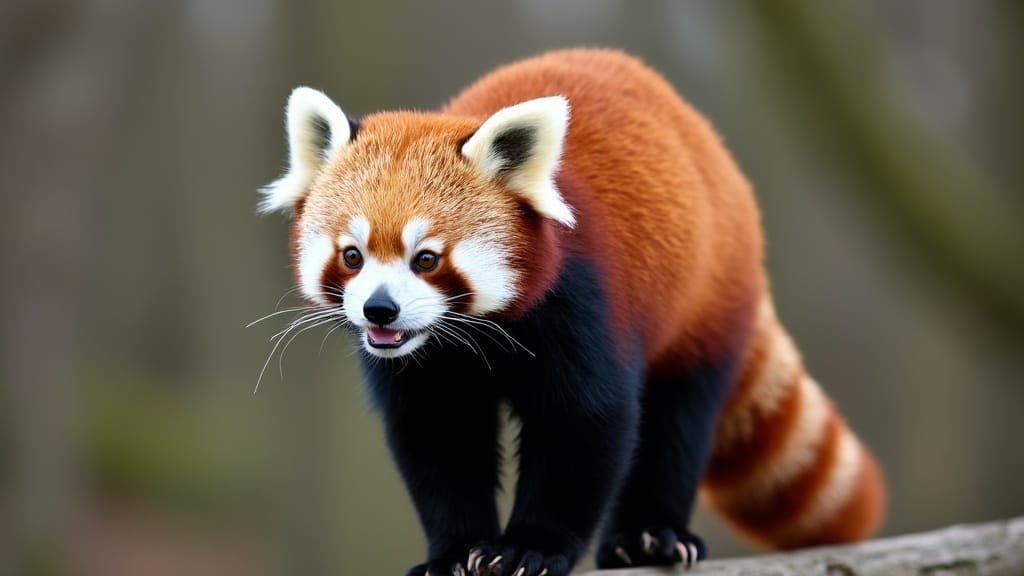
The red panda’s facial markings are the result of millions of years of evolutionary adaptations designed to enhance survival. While unique in their combination of colors and patterns, these markings share similarities with those of other mammals, suggesting common evolutionary pressures. By comparing red pandas to species with similar markings, we can better understand why these features developed and how they contribute to their way of life
Why Red Pandas Have Facial Markings Unlike Any Other Mammal
Red pandas possess a combination of white tear streaks, dark eye patches, and reddish fur that is not found in any other species. These markings evolved as a response to their arboreal lifestyle, their need for camouflage, and their method of social communication
One reason for this distinct patterning is the red panda’s unique ecological niche. Unlike most members of the order Carnivora, red pandas are almost entirely herbivorous, relying on bamboo as their primary food source. Their facial features did not evolve for hunting, as seen in big cats, but instead for detecting environmental cues, avoiding predators, and recognizing other red pandas in dense forest habitats. Choudhury (Journal of Zoology, 2001) suggests that their facial contrast enhances their ability to visually process surroundings while moving through trees, an advantage for an animal that relies on agility to escape danger
Furthermore, the presence of dark and light contrasts on their faces may have evolved to aid in thermoregulation. In some animals, darker facial fur absorbs more heat, while lighter fur reflects it, helping them maintain a balanced body temperature in varying climates. This could be particularly useful for red pandas, which inhabit both warm and snowy regions at different times of the year
Comparing Red Panda Facial Markings to Those of Raccoons and Cheetahs
Although red pandas are more closely related to raccoons than felines, their facial features share characteristics with both groups. Raccoons, for example, have dark eye patches that reduce glare and aid in night vision, a trait that red pandas may also benefit from. However, raccoons have a more distinct facial mask, while red pandas have a combination of eye patches, tear streaks, and contrasting fur patterns
Cheetahs, on the other hand, have white tear markings similar to red pandas. In cheetahs, these markings help reduce sunlight glare and improve focus while hunting. While red pandas do not hunt prey, their tear streaks may serve a similar function by enhancing their ability to see in low-light forest conditions. Wei et al. (Journal of Mammalogy, 2014) found that animals with tear markings often rely on keen vision in environments where light levels change rapidly, such as dense forests or open plains
Despite these similarities, red pandas are distinct in their combination of coloration, fur texture, and placement of markings. Unlike raccoons and cheetahs, their markings are adapted not for nocturnal hunting or high-speed chases but for blending into the treetops and interacting with other members of their species in a visually complex environment
How Evolution Has Shaped the Red Panda’s Distinctive Facial Features
The evolution of red panda facial markings can be traced back to the selective pressures of their environment. Living in high-altitude forests requires adaptations that aid in camouflage, communication, and sensory perception. Their markings developed in response to these needs, with each component of their facial pattern serving a different function
The dark patches around their eyes likely evolved as a vision-enhancing adaptation, helping red pandas see more clearly in shaded forests. The white tear streaks may have been selected for their role in glare reduction and depth perception, allowing red pandas to move confidently through the treetops. The contrast between their white cheeks and reddish fur may have been favored for social signaling, improving their ability to recognize others of their species from a distance
Over time, these features became more pronounced, giving red pandas their current distinctive appearance. Their markings remain consistent across all red panda populations, indicating that these traits continue to be advantageous in their natural habitat. Roberts and Gittleman (Mammalian Biology, 2020) suggest that the persistence of facial markings across generations indicates strong evolutionary benefits, reinforcing their role in red panda survival and adaptation
For more on the evolution and function of red panda facial markings, visit the Red Panda Network’s research section
